10 Key Customer Care KPIs to Elevate Your Service Standards

Tracking customer care KPIs has become a game-changer for businesses in 2025. Why? Because 33% of customers leave after just one bad experience, and 92% won’t return after two or three. These key performance indicators help you understand your customer journey, improve service, and boost operational efficiency. Tools like Sobot’s Live Chat simplify this process by offering real-time insights and seamless communication. With KPIs, you can measure what matters and deliver exceptional customer service every time.
Customer Satisfaction Score (CSAT)
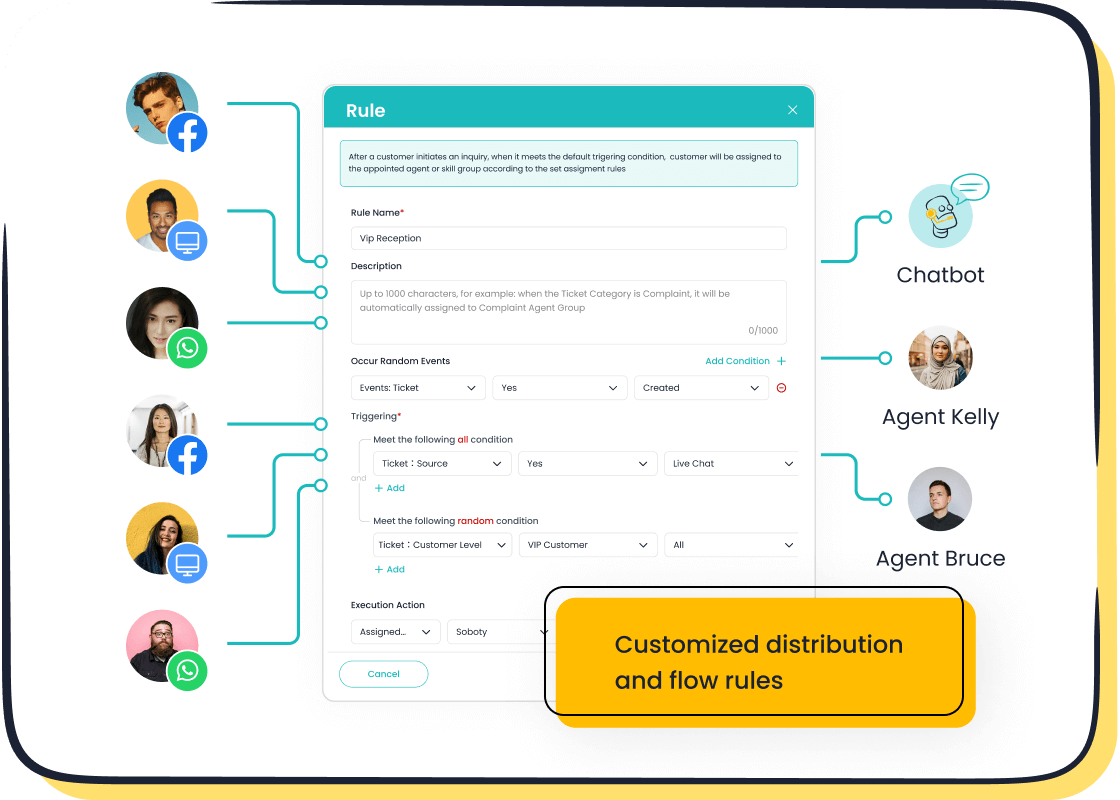
Understanding CSAT and its role in customer service.
CSAT, or Customer Satisfaction Score, is a simple yet powerful way to measure how happy your customers are with your service. It’s usually based on a single question like, “How satisfied were you with your experience?” Customers rate their satisfaction on a scale, often from 1 to 5. This score gives you a quick snapshot of how well you’re meeting customer expectations.
Why does this matter? Because satisfied customers are more likely to stick around, recommend your business, and even spend more. CSAT helps you identify what’s working and what needs improvement in your customer service strategy.
Why CSAT is a critical customer care KPI.
CSAT is one of the most important customer care KPIs because it directly reflects your customers’ experience. A higher score means happier customers, which often leads to better retention and higher profits. For example, a 1% increase in customer satisfaction can boost retention rates by 5%. On the flip side, customers with low satisfaction are up to 10 times more likely to leave. Tracking CSAT helps you stay ahead of potential issues and keep your customers loyal.
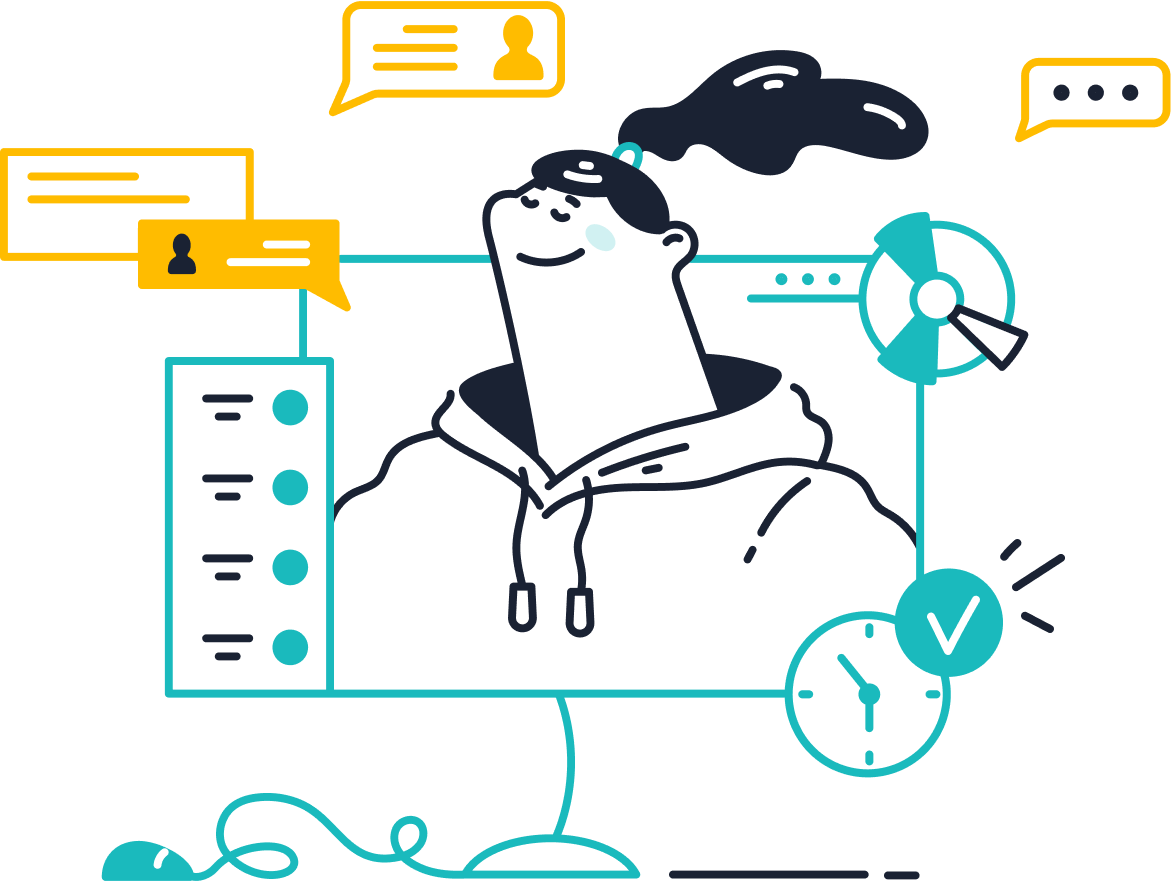
Measuring CSAT with tools like Sobot Live Chat.
Sobot Live Chat makes it easy to measure CSAT. After every interaction, you can send a quick survey asking customers to rate their experience. The platform’s built-in analytics then compiles this data, giving you actionable insights. With omnichannel support, you can gather feedback from multiple platforms like WhatsApp, Facebook, and your website—all in one place. This unified approach ensures you never miss a chance to understand your customers better.
Strategies to improve CSAT using customer feedback.
Improving your CSAT starts with listening to your customers. Use the feedback you collect to identify trends and address common pain points. For instance, if customers mention slow response times, you can train your team to prioritize speed. Tools like Sobot Live Chat can help by automating repetitive tasks, freeing up agents to focus on more complex issues. You can also use customer feedback to refine your products or services, ensuring they align with customer needs. Remember, even small changes can lead to big improvements in satisfaction.
Net Promoter Score (NPS)
What NPS reveals about customer loyalty.
Net Promoter Score (NPS) is a simple yet powerful way to measure customer loyalty. It asks one key question: “How likely are you to recommend our business to others?” Customers respond on a scale from 0 to 10, and their answers categorize them as Promoters, Passives, or Detractors. Promoters (scores of 9-10) are your loyal advocates, while Detractors (scores of 0-6) may harm your reputation.
Why does this matter? Loyal customers, or Promoters, are more likely to make repeat purchases and refer others. This not only boosts your revenue but also reduces marketing costs. A strong NPS reflects positive customer experiences, which build trust and brand advocacy.
The importance of NPS in customer success metrics.
NPS is a cornerstone of customer success metrics because it directly links to business outcomes. Companies with high NPS scores often see increased profitability, better retention rates, and higher customer lifetime value. For example:
| Business Outcome | Description |
|---|---|
| Profitability | A strong NPS is linked to increased profitability as Promoters tend to buy more and refer others. |
| Customer Lifetime Value | NPS correlates with customer lifetime value, indicating future revenue streams. |
| Customer Retention Rates | Higher NPS scores are associated with improved customer retention rates. |
Tracking NPS helps you understand how well your service aligns with customer expectations, making it a critical customer care KPI.
How to calculate NPS effectively.
Calculating NPS is straightforward. Subtract the percentage of Detractors from the percentage of Promoters. For example, if 70% of your customers are Promoters and 10% are Detractors, your NPS would be 60.
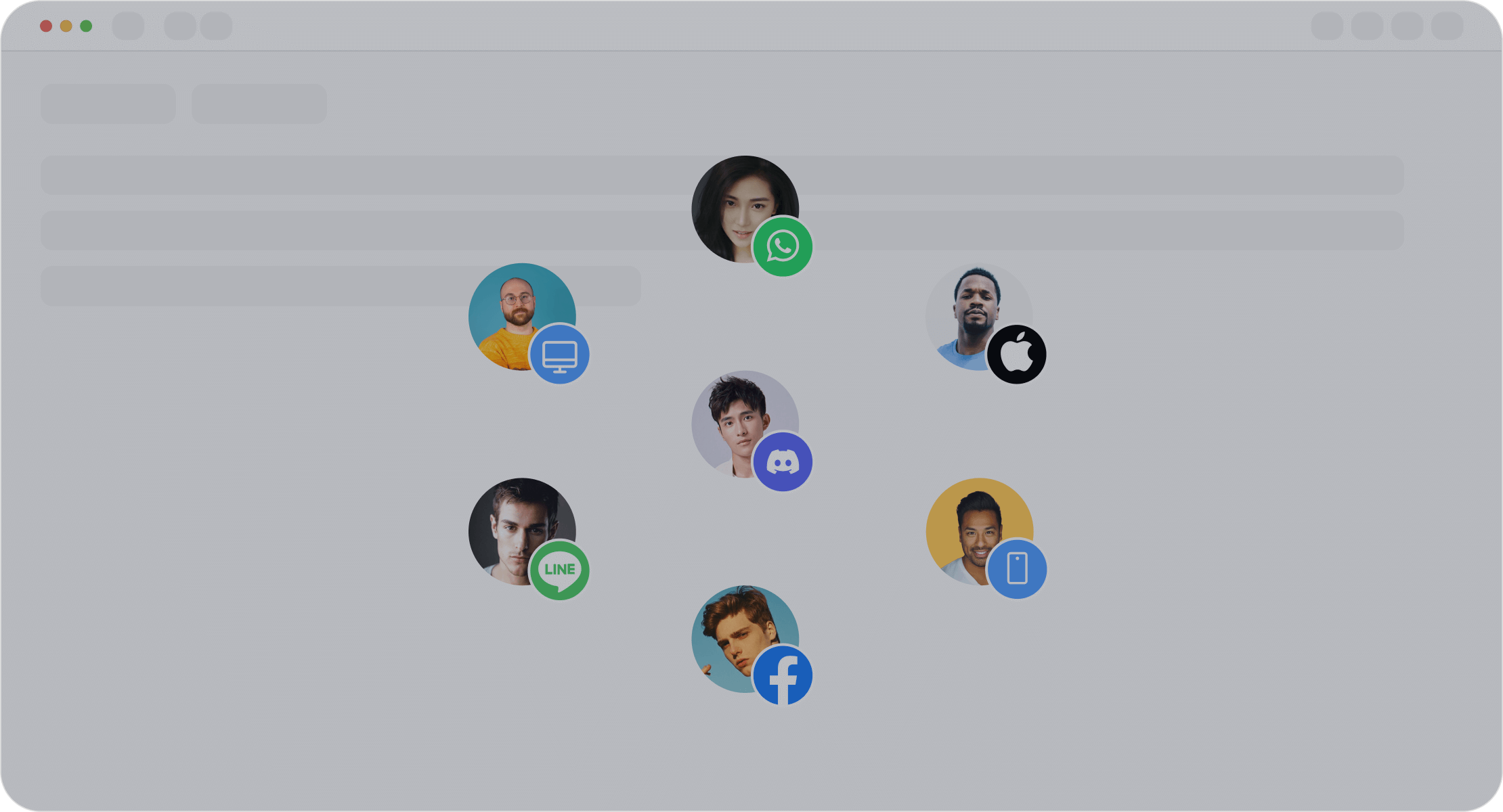
To get accurate results, collect feedback across multiple channels. Tools like Sobot’s Live Chat make this easy by integrating surveys into platforms like WhatsApp, Facebook, and your website. This omnichannel approach ensures you capture a complete picture of customer sentiment.
Enhancing NPS with omnichannel solutions like Sobot.
Improving NPS starts with delivering seamless, personalized experiences. Sobot’s omnichannel solution helps you do just that. By unifying customer interactions across platforms, it ensures consistent service. Its AI-driven tools handle repetitive tasks, freeing up your team to focus on building relationships.
For example, Agilent, a leader in life sciences, used Sobot’s omnichannel workbench to improve their NPS. They achieved a sixfold increase in efficiency and a customer satisfaction score of 95%. With Sobot, you can turn Detractors into Promoters and foster long-term loyalty.
First Response Time (FRT)

Defining FRT and its impact on customer experience.
First Response Time (FRT) measures how quickly your team responds to a customer inquiry. It’s one of the most critical contact center metrics because it directly influences the customer experience. Imagine reaching out for help and waiting endlessly—that’s frustrating, right? Studies show that 60% of customers feel dissatisfied after just a one-minute hold. Whether it’s live chat, email, or social media, a quick response can make all the difference in how customers perceive your service.
Why reducing FRT is vital for customer satisfaction.
Reducing FRT isn’t just about speed; it’s about showing customers you value their time. Long wait times can lead to frustration and even churn. On the other hand, a fast response builds trust and loyalty. For live chat, an ideal FRT is 45 seconds or less, while email and social media responses should ideally be under four hours. Meeting these benchmarks can significantly boost satisfaction and retention rates, making FRT a key customer care KPI.
Tracking FRT with Sobot's unified workspace.
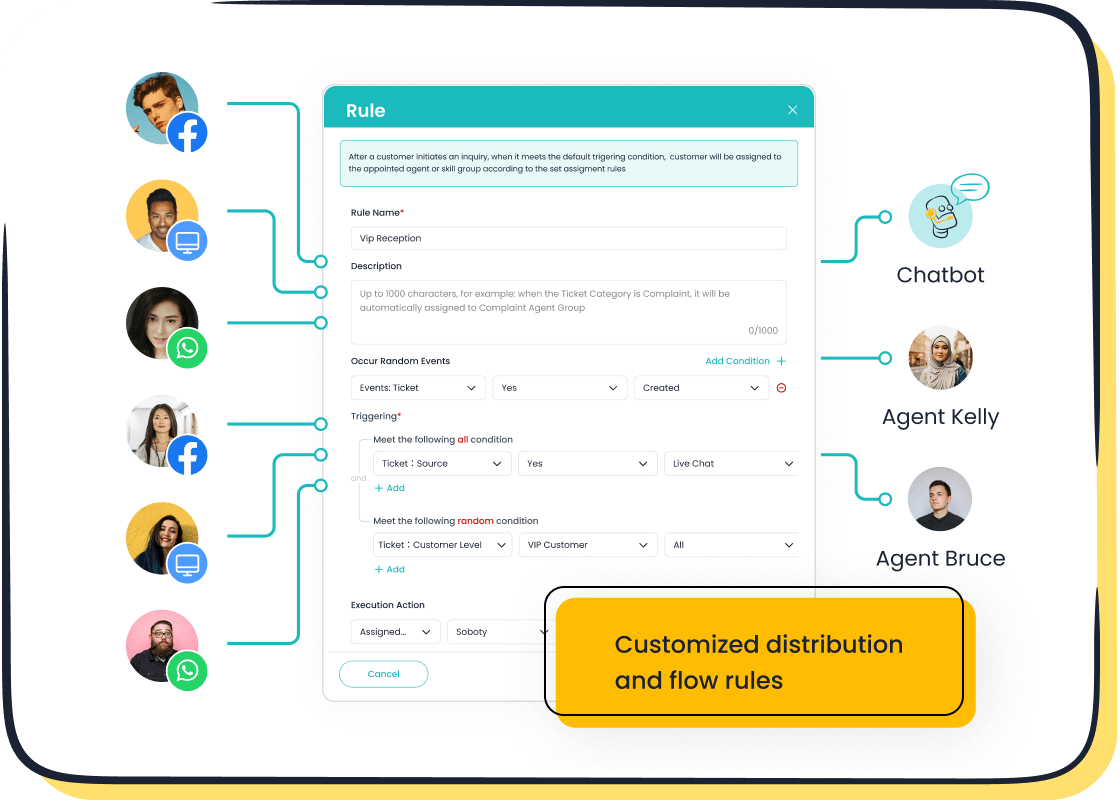
Sobot’s unified workspace simplifies how you track FRT across multiple channels. By consolidating all customer interactions—whether from WhatsApp, Facebook, or your website—into one platform, agents can respond faster and more efficiently. The built-in analytics provide real-time insights into agent performance, helping you identify bottlenecks and improve response times. This streamlined approach ensures your team delivers consistent, high-quality service.
Tips to optimize FRT for better service delivery.
Want to improve your FRT? Start by automating repetitive tasks with tools like Sobot’s AI-powered chatbot. This frees up agents to focus on more complex issues. Next, prioritize first contact resolution by equipping your team with the right training and resources. Finally, monitor agent performance regularly. Use data-driven insights to identify areas for improvement and reward top-performing agents. These steps not only enhance FRT but also elevate your overall contact center metrics.
Average Resolution Time (ART)
What ART tells you about your service efficiency.
Average Resolution Time (ART) measures how long it takes to resolve a customer issue from start to finish. It’s a direct reflection of your team’s efficiency and your overall service quality. A shorter ART means your team is resolving issues quickly, which leads to a better customer experience. On the other hand, a longer ART can signal bottlenecks or inefficiencies in your processes.
Think of ART as a mirror for your operations. It shows how well your team handles customer inquiries and how effectively resources are allocated. For example, if your ART is consistently high, it might be time to review your workflows or invest in tools like Sobot Live Chat to streamline communication.
The connection between ART and customer care KPIs.
ART isn’t just a standalone metric—it’s deeply tied to other customer care KPIs. A lower ART often leads to higher customer satisfaction and better retention rates. Here’s a quick breakdown of how ART impacts your performance:
| Evidence Type | Description |
|---|---|
| Relationship with Customer Satisfaction | ART directly correlates with customer satisfaction and loyalty. Faster resolutions lead to happier customers. |
| Resource Allocation Impact | Efficient ART management improves resource utilization and reduces operational costs. |
| Benchmarking Importance | Comparing ART to industry standards helps identify areas for improvement and boosts operational efficiency. |
By tracking ART alongside other KPIs, you can get a clearer picture of your team’s performance and make data-driven decisions to improve your service.
Using Sobot Live Chat to monitor and improve ART.
Sobot Live Chat is a game-changer when it comes to managing ART. Its unified workspace consolidates all customer interactions across platforms like WhatsApp, Facebook, and your website. This means your agents can respond faster without switching between tools. The platform’s built-in analytics also track ART in real-time, giving you actionable insights to optimize your workflows.
For instance, Sobot’s AI-powered tools can handle repetitive queries, freeing up your agents to focus on more complex issues. This not only reduces resolution times but also enhances the overall customer experience. With Sobot, you can ensure your team delivers fast, efficient service every time.
Best practices for reducing resolution times.
Want to lower your ART? Start by empowering your team with the right tools and training. Here are some tips to get you started:
- Automate repetitive tasks: Use AI-powered chatbots like those offered by Sobot to handle common queries.
- Streamline workflows: Ensure your agents have access to a unified workspace for faster responses.
- Set clear goals: Establish ART benchmarks based on industry standards and track your team’s performance regularly.
- Focus on first contact resolution: Equip your agents with the knowledge and resources to solve issues on the first try.
By implementing these strategies, you’ll not only reduce ART but also improve customer satisfaction and loyalty. Remember, every second counts when it comes to delivering exceptional service.
Customer Effort Score (CES)
How CES measures the ease of customer interactions.
Customer Effort Score (CES) measures how easy it is for customers to interact with your business. It focuses on the effort customers put into resolving their issues or completing a task. For example, a CES survey might ask, “How easy was it to get your issue resolved today?” Customers rate their experience on a scale, with lower effort scores indicating a smoother interaction.
Why does this matter? Because customers value convenience. If they find your service easy to use, they’re more likely to return. CES highlights areas where your processes might be causing frustration, giving you a clear path to improve service quality.
Why CES is a key indicator of service quality.
CES is a critical customer care KPI because it directly reflects how well your service aligns with customer expectations. A high CES means customers find your processes hassle-free, which boosts satisfaction and loyalty. Here’s why CES stands out:
| Strengths of CES | Description |
|---|---|
| Predictive of Loyalty | Lower effort experiences lead to higher retention rates. |
| Focus on Pain Points | Highlights processes causing frustration, helping you prioritize fixes. |
| Aligns with Customer Expectations | Meets customer demand for convenience and hassle-free service. |
| Simple to Track | Easy to measure through surveys, offering actionable insights. |
By focusing on CES, you can enhance service quality and create a better overall experience for your customers.
Leveraging Sobot's AI tools to track CES.
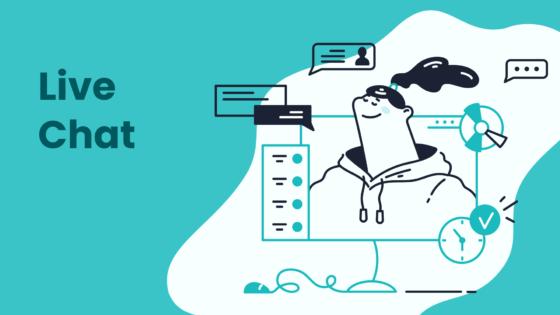
Sobot’s AI-powered tools make it simple to track CES across multiple channels. With features like automated surveys, you can gather feedback instantly after interactions. The platform’s built-in analytics provide real-time insights, helping you identify trends and areas for improvement. For example, if customers consistently report high effort on a specific channel, Sobot’s unified workspace allows you to streamline workflows and reduce friction. This ensures your team delivers consistent, high-quality performance.
Reducing customer effort with automation and self-service.
Automation and self-service are game-changers for reducing customer effort. Tools like Sobot’s AI-powered chatbot handle repetitive queries, allowing customers to find answers instantly. This not only saves time but also improves performance by freeing up agents to focus on complex issues. Self-service options, like knowledge bases or FAQs, empower customers to resolve problems on their own. By integrating these solutions, you can lower effort scores and enhance service quality. Remember, the easier you make it for customers, the more likely they are to stay loyal.
Ticket Volume
What ticket volume indicates about your support system.
Ticket volume reflects the number of customer inquiries your support team handles over a specific period. It’s a direct indicator of your system’s workload and efficiency. A high ticket volume might suggest growing customer interest or recurring issues with your product or service. On the other hand, a low volume could mean your self-service options are working well or that demand has decreased. By tracking ticket volume, you gain valuable insights into your team’s performance and your customers’ needs.
For example, analyzing ticket volume by support channel helps you optimize staffing. If most tickets come from live chat, you can allocate more agents there. Comparing tickets opened versus solved shows how efficiently your team resolves issues. Metrics like response and resolution times further reveal how well your support system performs.
| Metric | Description |
|---|---|
| Ticket Volume by Support Channel | Measures the number of tickets received through various channels, helping to optimize staffing needs. |
| Tickets Opened vs. Solved | Compares the number of tickets opened to those solved, indicating the efficiency of the support team. |
| Response Time | Tracks the time taken for the first response to a ticket, impacting customer satisfaction. |
| Resolution Time | Measures the total time taken to resolve a ticket, crucial for assessing overall support performance. |
The importance of analyzing ticket trends.
Understanding ticket trends helps you predict customer needs and optimize operations. A sudden surge in tickets might indicate a product issue or a successful marketing campaign. A drop could mean improved self-service options or seasonal changes. By analyzing these trends, you can adjust staffing, improve workflows, and enhance customer satisfaction.
| Insight | Description |
|---|---|
| Importance of Ticket Volume | Analyzing ticket volumes is crucial for predicting customer needs and assessing business performance. |
| Key Performance Indicator | Ticket volumes serve as a KPI that reflects the health of customer support operations. |
| Data-Driven Approach | Utilizing data helps in optimizing ticket routing and prioritization, ensuring critical issues are addressed promptly. |
For instance, businesses that use data-driven approaches can better allocate resources and ensure critical issues get resolved quickly. This proactive strategy leads to more efficient support and happier customers.
Managing ticket volume with Sobot's omnichannel solution.

Sobot’s omnichannel solution simplifies ticket management by unifying all customer interactions into one platform. Whether inquiries come from WhatsApp, Facebook, or your website, Sobot consolidates them into a single workspace. This approach reduces the need for agents to switch between tools, improving efficiency.
Studies show that intelligent solutions like Sobot’s can reduce ticket volume by up to 22.2% while maintaining a customer satisfaction score of 97%. Features like AI-driven chatbots handle repetitive queries, freeing agents to focus on complex issues. With Sobot, you can manage ticket volume effectively and deliver exceptional service.
| Study Description | Reduction in Ticket Volume | Customer Satisfaction Score |
|---|---|---|
| Over two years, self-service platform | 20% | 96%+ |
| Intelligent solutions in Southeast Asia | 22.2% | 97% |
| Problem-solving efficiency | 85% | 99% |
Proactive strategies to reduce ticket volume.
Reducing ticket volume starts with empowering customers to solve issues independently. Self-service options like FAQs and knowledge bases are great tools. Sobot’s AI-powered chatbot takes this a step further by providing instant answers to common questions. This reduces the need for human intervention and speeds up resolutions.
Another strategy is to identify recurring issues through ticket analysis. If a specific problem keeps coming up, address it at its root. For example, update your product or improve instructions to prevent confusion. Finally, use automation to streamline workflows. Sobot’s intelligent assignment feature ensures tickets reach the right agent, reducing delays and improving efficiency.
By implementing these strategies, you’ll not only lower ticket volume but also enhance the overall customer experience.
Customer Retention Rate
Why retention is a cornerstone of customer success metrics.
Retention is the backbone of customer success metrics because it directly impacts your business's profitability and growth. Keeping your existing customers happy is far more cost-effective than acquiring new ones. In fact, studies show that it costs 5-25 times more to attract a new customer than to retain an existing one. Plus, increasing your customer retention rate by just 5% can boost profits by 25-95%. These numbers highlight why focusing on retention is a smarter, more sustainable strategy.
| Statistic | Implication |
|---|---|
| A low CRR indicates client dissatisfaction. | Understanding CRR is crucial for identifying areas needing improvement in customer care. |
| It costs 5-25x more to attract a new customer than to retain an existing one. | Retaining customers is more cost-effective than acquiring new ones, highlighting the importance of customer retention for profitability. |
| Increasing customer retention rates by 5% increases profits by 25-95%. | Even small improvements in retention can lead to significant revenue growth, emphasizing its critical role in long-term success. |
Calculating and interpreting retention rates.
Calculating your customer retention rate is straightforward. Use this formula:
((Customers at End of Period - New Customers Acquired) / Customers at Start of Period) x 100
For example, if you started the month with 1,000 customers, gained 200 new ones, and ended with 1,050, your retention rate would be:
((1050 - 200) / 1000) x 100 = 85%
A high retention rate signals customer satisfaction and loyalty, while a low rate may indicate issues in your service or product. Regularly track this metric to identify trends and make proactive adjustments.
| Aspect | Description |
|---|---|
| Definition | Customer retention rate measures the percentage of customers a company retains over a specific period. |
| Importance for business health | A high retention rate indicates customer satisfaction and loyalty, essential for long-term success. |
| Revenue stability and growth | Retaining customers is more cost-effective than acquiring new ones, promoting stable revenue and growth through upselling and referrals. |
Improving retention with personalized service via Sobot Live Chat.

Personalized service is key to retaining customers, and Sobot Live Chat makes it easier than ever. By unifying customer interactions across platforms like WhatsApp, Facebook, and your website, Sobot ensures every conversation feels seamless. Its AI-powered tools allow you to offer tailored solutions, boosting customer engagement and loyalty. For instance, Sobot’s customer segmentation feature helps you understand individual preferences, enabling you to deliver experiences that resonate.
Agilent, a leader in life sciences, leveraged Sobot’s omnichannel solution to achieve a 95% customer satisfaction score. This demonstrates how personalized service can significantly improve retention and customer lifetime value.
Long-term strategies to foster customer loyalty.
Building loyalty takes time, but the payoff is worth it. Here are some strategies to keep your customers coming back:
- Focus on relationships: Use tools like Sobot Live Chat to engage with customers on a personal level.
- Offer value consistently: Provide high-quality products and services that meet customer needs.
- Leverage feedback: Regularly collect and act on customer feedback to improve their experience.
- Reward loyalty: Implement programs that recognize and reward repeat customers.
By combining these strategies with data-driven insights from tools like Sobot, you can create a loyal customer base that drives long-term success.
Customer Churn Rate
Understanding churn and its impact on business growth.
Customer churn rate measures the percentage of customers who stop doing business with you over a specific period. It’s a clear indicator of customer satisfaction and loyalty. High churn rates often signal deeper issues, like poor service or product quality. These issues can directly impact your revenue and growth. For example:
| Metric | Description |
|---|---|
| Churn Rate | Percentage of customers lost over a specific period, reflecting customer satisfaction and loyalty. |
| Business Growth | Directly impacted by churn rates, as high churn can lead to decreased revenue and growth. |
| Customer Satisfaction | High churn rates often indicate low satisfaction, signaling potential issues in service or product quality. |
Monitoring churn helps you spot problems early and take action to improve retention. After all, keeping customers is far more cost-effective than acquiring new ones.
Why churn rate is a critical customer care KPI.
Churn rate is a vital customer care KPI because it directly affects your bottom line. Losing customers means losing revenue, and it’s a sign that something in your service or product isn’t meeting expectations. High churn rates can also hurt your reputation, making it harder to attract new customers. By tracking churn, you can identify trends, improve customer success metrics, and create strategies to keep customers engaged.
Tools and techniques to measure churn rate.
To measure churn rate, use this formula:
(Customer Count at Start - Customer Count at End) / Customer Count at Start x 100
For example, if you started with 1,000 customers and ended with 950, your churn rate would be 5%. Tools like Sobot Live Chat and its built-in analytics make it easy to track this metric. You can also analyze operational insights, like declining repeat purchases or low Net Promoter Scores, to predict churn. Advanced analytics can help you understand why customers leave and guide you in creating targeted strategies to retain them.
By leveraging advanced analytics techniques to analyze churn data, you can better understand why customers leave and develop targeted strategies to keep them loyal.
Reducing churn with proactive customer engagement.
Proactive engagement is key to reducing churn. Start by identifying at-risk customers using tools like Sobot’s omnichannel solution. For instance, if a customer hasn’t interacted with your brand recently, reach out with personalized offers or helpful resources. Automate follow-ups with Sobot’s AI-powered chatbot to keep customers engaged without overwhelming your team.
Here’s a simple plan to reduce churn:
- Identify factors driving churn.
- Improve customer onboarding and engagement processes.
- Make product adjustments to better meet customer needs.
By focusing on proactive engagement, you can turn potential churners into loyal advocates, boosting both retention and customer success metrics.
Call Abandonment Rate
What call abandonment rate reveals about your service.
Call abandonment rate measures how often customers hang up before speaking to an agent. It’s a direct reflection of your service efficiency. High abandonment rates often indicate long wait times or poor call routing. These issues can frustrate customers and make them feel undervalued. On the other hand, a low abandonment rate shows that your team is responsive and well-prepared to handle inquiries.
Tracking this metric helps you identify bottlenecks in your system. For example, if calls are frequently abandoned during peak hours, it might signal the need for better staffing or smarter routing. By understanding this KPI, you can take steps to improve your overall customer care strategy.
The impact of call abandonment on customer satisfaction.
When customers abandon calls, it’s often due to impatience. Studies show that patience plays a key role in how long someone is willing to wait. If they feel ignored, their satisfaction drops, even if they eventually get help. While abandonment rates don’t always directly correlate with satisfaction, they do highlight areas where your service might be falling short.
Reducing abandonment rates can boost customer success metrics like retention and loyalty. Customers who feel heard and valued are more likely to stay with your brand. This makes call abandonment rate a critical customer care KPI to monitor.
Tracking and reducing call abandonment with Sobot's Voice Call Center.
Sobot’s Voice Call Center offers tools to track and reduce call abandonment rates effectively. Its smart routing system ensures calls reach the right agent quickly, minimizing wait times. Features like drag-and-drop IVR and rule-based routing streamline the process further. Real-time analytics provide insights into call patterns, helping you adjust staffing during busy periods.
For instance, if you notice a spike in abandoned calls during lunch hours, you can use Sobot’s data to reallocate resources. This proactive approach not only reduces abandonment but also improves customer service quality.
Tips to improve call handling efficiency.
Improving call handling efficiency starts with proper planning. Here are some actionable tips:
- Use automation: Tools like Sobot’s AI-powered features can handle repetitive tasks, freeing agents to focus on complex calls.
- Train your team: Equip agents with the skills to resolve issues quickly and professionally.
- Monitor performance: Regularly track metrics like call abandonment and resolution times to identify areas for improvement.
- Optimize staffing: Use data to ensure you have enough agents during peak hours.
By implementing these strategies, you can create a smoother experience for your customers and enhance your customer success metrics.
Employee Satisfaction Score (ESS)
Why employee satisfaction matters in customer service.
Happy employees create happy customers. When your team feels valued and supported, they’re more likely to go above and beyond for your customers. Research shows a direct link between employee satisfaction and customer satisfaction. Satisfied employees are more productive, loyal, and committed to delivering excellent service. This ripple effect improves your customer success metrics and strengthens your brand reputation.
Think about it—if your team enjoys their work, they’ll naturally bring more energy and positivity to customer interactions. On the flip side, disengaged employees can lead to poor service experiences, which may harm your customer care KPIs. Prioritizing employee satisfaction isn’t just good for your team; it’s essential for your business.
Measuring ESS to improve service quality.
Tracking Employee Satisfaction Score (ESS) is simple yet powerful. Use surveys to ask your team questions like, “How satisfied are you with your role?” or “Do you feel supported at work?” These insights help you identify areas for improvement. For example, if your team feels overwhelmed, you can adjust workloads or provide better tools.
Sobot’s collaborative tools make it easy to track ESS. Features like built-in analytics and real-time feedback collection give you a clear picture of your team’s morale. By addressing their concerns, you’ll create a more engaged workforce, which directly improves customer service quality.
Enhancing ESS with Sobot's collaborative tools.
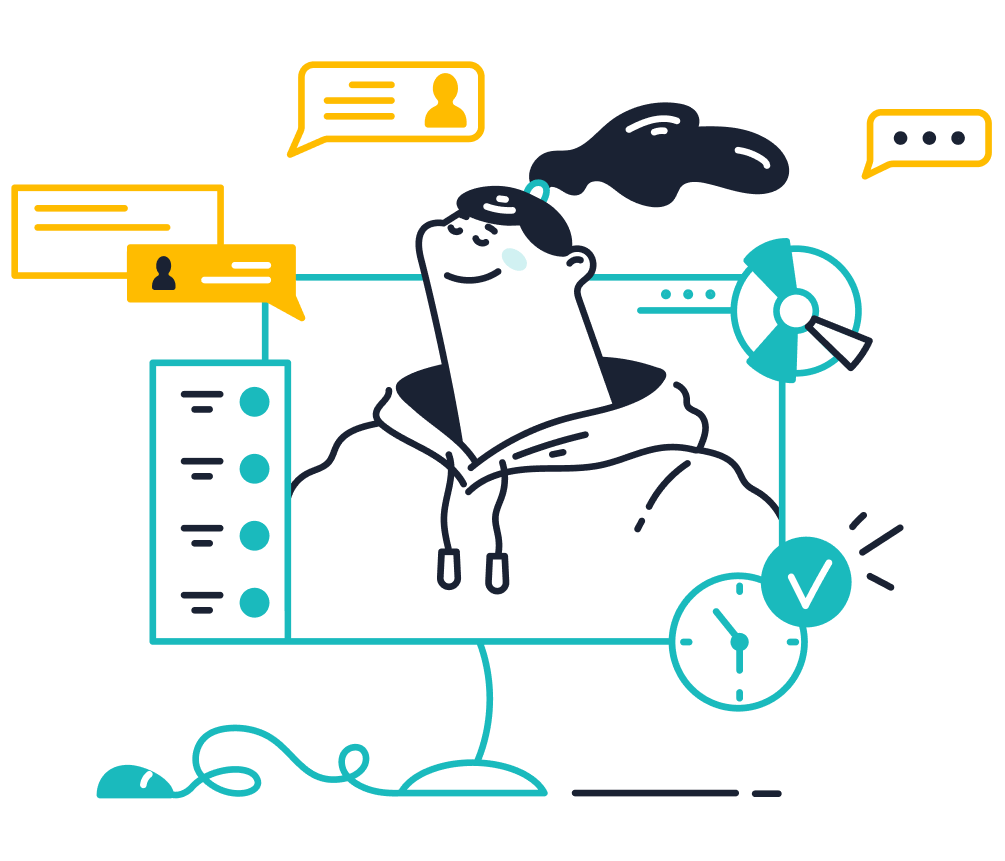
Sobot’s platform is designed to empower your team. Its unified workspace reduces stress by consolidating tasks and customer interactions in one place. AI-powered tools handle repetitive queries, freeing up your team to focus on meaningful work. This not only boosts efficiency but also enhances job satisfaction.
For example, Agilent used Sobot’s tools to streamline workflows, resulting in a sixfold increase in efficiency. When your team has the right resources, they can perform at their best, which positively impacts your customer success metrics.
Creating a positive work environment for better customer outcomes.
A positive work environment is the foundation of great customer service. Start by fostering open communication and recognizing your team’s efforts. Offer training programs to help them grow and feel confident in their roles. Small gestures, like celebrating milestones, can go a long way in boosting morale.
When your team feels appreciated, they’re more likely to deliver exceptional service. Sobot’s tools support this by simplifying workflows and reducing stress. By investing in your employees, you’re also investing in your customers. After all, a happy team leads to happy customers.
Tracking these 10 customer care KPIs is your roadmap to delivering exceptional service. They help you understand your customers, improve satisfaction, and boost loyalty. Tools like Sobot Live Chat and its omnichannel solutions simplify this process by unifying interactions and offering actionable insights. Start implementing these KPIs today to stay ahead in 2025. 🚀
FAQ
How can Sobot Live Chat improve customer satisfaction?
Sobot Live Chat boosts satisfaction by offering instant responses, personalized service, and omnichannel support. It reduces wait times and simplifies communication across platforms like WhatsApp and Facebook.
What makes omnichannel solutions essential for customer care KPIs?
Omnichannel solutions unify customer interactions, ensuring seamless service. Sobot’s tools improve metrics like CSAT and NPS by streamlining workflows and enhancing customer engagement.
Can Sobot help reduce ticket volume?
Yes! Sobot’s AI-powered chatbot handles repetitive queries, cutting ticket volume by up to 22%. This frees agents to focus on complex issues, improving efficiency and satisfaction.
See Also
Best Customer Service Tools You Need in 2024
Enhancing Customer Satisfaction Through Live Chat Tips
Effective Strategies for Quality Management in Call Centers
Leading Customer Feedback Software Options for 2024
Guide to Successfully Implementing Omnichannel Contact Centers